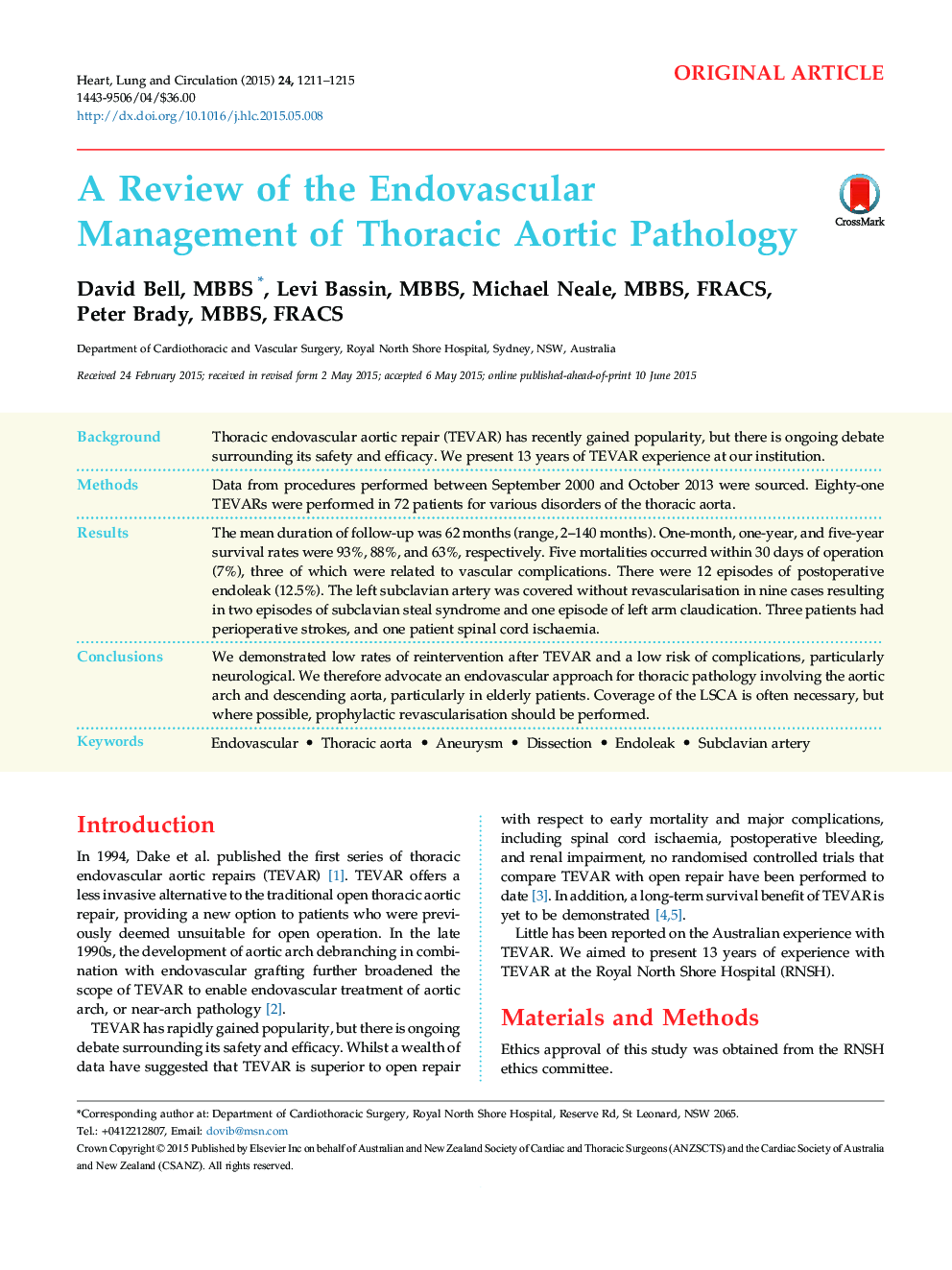| کد مقاله | کد نشریه | سال انتشار | مقاله انگلیسی | نسخه تمام متن |
|---|---|---|---|---|
| 5959016 | 1175657 | 2015 | 5 صفحه PDF | دانلود رایگان |
BackgroundThoracic endovascular aortic repair (TEVAR) has recently gained popularity, but there is ongoing debate surrounding its safety and efficacy. We present 13 years of TEVAR experience at our institution.MethodsData from procedures performed between September 2000 and October 2013 were sourced. Eighty-one TEVARs were performed in 72 patients for various disorders of the thoracic aorta.ResultsThe mean duration of follow-up was 62 months (range, 2-140 months). One-month, one-year, and five-year survival rates were 93%, 88%, and 63%, respectively. Five mortalities occurred within 30 days of operation (7%), three of which were related to vascular complications. There were 12 episodes of postoperative endoleak (12.5%). The left subclavian artery was covered without revascularisation in nine cases resulting in two episodes of subclavian steal syndrome and one episode of left arm claudication. Three patients had perioperative strokes, and one patient spinal cord ischaemia.ConclusionsWe demonstrated low rates of reintervention after TEVAR and a low risk of complications, particularly neurological. We therefore advocate an endovascular approach for thoracic pathology involving the aortic arch and descending aorta, particularly in elderly patients. Coverage of the LSCA is often necessary, but where possible, prophylactic revascularisation should be performed.
Journal: Heart, Lung and Circulation - Volume 24, Issue 12, December 2015, Pages 1211-1215
